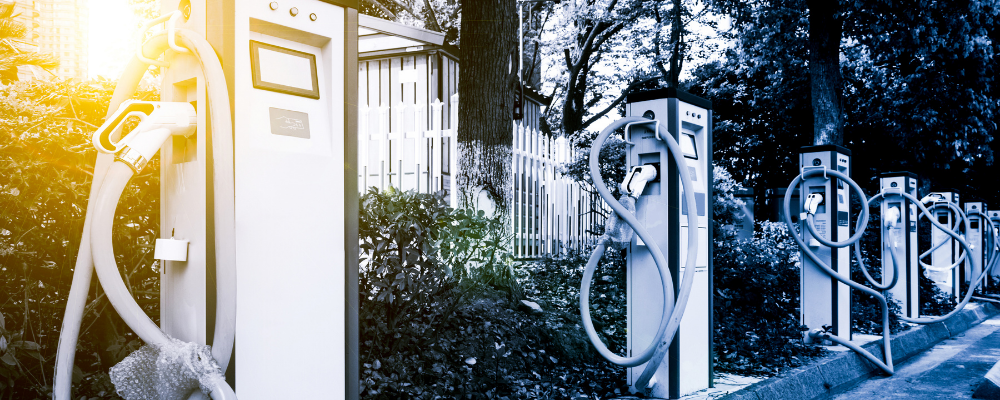Drop off your CV
We'd love to hear from you. Send us your CV and one of our specialist consultants will be in touch.

At CSG Talent, we’ve explored the significant impact Electric Vehicles are having on future facing commodities and the countries and companies operating within the EV market. There is a huge demand for electric vehicles globally, with EV sales hitting 6.3 million in 2021. According to Benchmark Mineral Intelligence, this is an increase of 112% on previous years.
In the UK, The Society of Motor Manufacturers and Traders have forecast 470,000 of new cars sold throughout 2022 will be electric vehicles, an increase of 50% on the year previous. That equates to 25% of the new car sales market in the UK. Throughout 2021, three million of new vehicles sold in China were either electric or hybrid models. This was estimated to be 15% of the market share, with predictions to see that increase by a further 5% in 2022.
The demand for EV Commodities is expected to increase throughout 2022 and beyond. Lithium carbonate - +40% or 491,896 metric tonnes, by 2025 that demand will be 1.1million. Bank of America has predicted an annual demand increase for lithium of 28% between now and 2025. Cobalt demand is expected to increase to 195,000 metric tons in 2022 +47% and Nickel demand is expected to increase by up to 20% in 2022 with an anticipated surplus of 59.000 metric tons.
Let’s look at the key mining owners who mine the bulk of those commodities:
The Democratic Republic of Congo produces 60% of the worlds Cobalt, with Chile having the world’s largest known reserve of Lithium at 8 million tonnes. China has 60% of the global market share in chemical processing and refining of critical battery minerals, with cobalt and graphite as high as 80% market share. Annually, 1.8 million tonnes of Nickel is produced across the Philippines and Indonesia.
Reports suggest we will experience the largest shortage of lithium on record in 2022, with challenges posed for new mining sites. It can take on average between seven and ten years to open a new mine, a lengthy timescale to support supply and demand of lithium. Rio Tinto’s $2.4 billion Serbian Lithium Jadar mine project has been cancelled by the nations government which will dramatically impact lithium supply. At present, the United States only has one mine producing Nickel, Lundin Mining’s Michigan Eagle Mine.
Tesla in China have started producing more affordable alternative batteries that use lithium iron phosphate, which account for 57% of the batteries produced in China in 2021. These batteries have a downside however they don’t have the same life span as the ones built with nickel & cobalt.
The expansion of current mines allows miners to access greater output in a shorter period that getting new discoveries developed and into production. Mineral Resources announces pivot back to Lithium with falling Iron Ore prices and labour challenges, they are restarting their Wodinga Lithium mine. Oz Minerals recently announced they will be now looking at on site nickel processing at their new $1billion West Musgrave mine development project to take advantage of the rise in nickel demand.
More needs to be done in relation to EV waste, 40% of raw materials can be lost as factories ramp up whilst attempting to meet EV quality requirements, mature plans typically scrap 5-10% of their supplies. Redwood which offers EV battery end of life solutions is now valued at $3.7billion after a recent round of private funding, which Ford invested $50million.
To compete with China in the production of Lithium, there are plans for geothermal lithium projects to be implemented at California’s Salton Sea. According to the California Energy Commission there is the potential to produce 600,000 metric tons of Lithium carbonate per year from the site. Berkshire Hathaway Energy has an investment on the site already, along with EnergySource Minerals which plans to have a Lithium Plant operational by 2024.
Controlled Thermal Resources estimates it can generate 300,000 metric tons of lithium carbonate per annum & providing enough electricity to power 1 million homes - General Motors have already agreed to first rights on the lithium producer’s production. China already has 14 geothermal lithium projects past exploration stage.
As countries and companies look to a carbon neutral future, expect plenty of competition for assets, consolidation, and huge capital investment.
The future looks bright and exciting in EV related markets.
If you’re interested in discussing developments and challenges across the EV market, you’re looking to enhance your hiring strategy in this space or seeking a new opportunity within EV, please get in touch for a conversation.